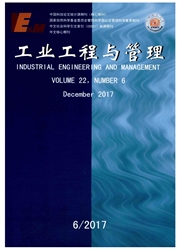

 中文摘要:
中文摘要:
物流业是高能耗及高排放行业,其节能减排需引起高度重视。将能源投入与污染物纳入全要素生产率分析框架,构建了基于投入导向与产出导向的DEA模型,测度了2006~2013年间中国29个省份物流业的节能减排效率和潜力,并对重点地区进行了评价。研究发现:中国物流业节能效率与减排效率都较低,年均分别为0.53与0.66。西部节能效率最低,中部减排效率最低,东部的节能效率与减排效率均最高。影响因素回归结果显示:研发强度、外商直接投资对物流业节能减排效率有正面影响,工业化程度、国有率则有负面影响。物流业节能减排效率与人均GDP呈现倒U型曲线,实现物流业增长与环境绩效改善的双赢发展极具挑战性。
 英文摘要:
英文摘要:
Logistics industry is the main area of energy consumption and carbon emissions.By putting the non-consensual output into total factor production framework and based on the input and output-oriented DEA model,the efficiency and potential of energy-saving emissionreducing of logistics industry from 2006 to 2013is measured.The results reveal that logistics industry has lower efficiency on energy-saving potential and emission-reducing.The annual average efficiencies are 0.53 and 0.66 respectively.There is a downtrend in efficiency of emissionreducing.The west region has the lowest efficiency on energy-saving;the middle has the lowest efficiency on carbon emissions;and the northeast has the highest efficiencies both on energy consumption and carbon emissions.The affect factors regression results show that there is an inverted U-shaped curve relationship between efficiency and GDP per capita.RD intensity and FDI improve efficiency on energy-saving and emission-reducing,while industrialization and the ownership structure have negative effects on the efficiency.
 同期刊论文项目
同期刊论文项目
 同项目期刊论文
同项目期刊论文
 Research on the Differences of the Leading Industries’ Development and Energy Consumption Among Chin
Research on the Differences of the Leading Industries’ Development and Energy Consumption Among Chin 期刊信息
期刊信息
